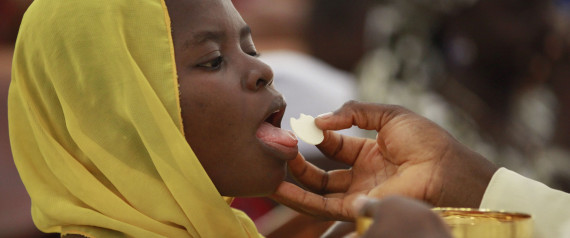By Dr. Scott Hahn
Matthew's Gospel revels in linking the Old Testament to the New. A biblical scholar provides keys to unlock this Gospel, which will be read on most Sundays this year.
A Catholic 'Key'
The Biblical 'Type'
The New Hidden in the Old
The Promised Son
New Moses, New Exodus
David's Kingdom Comes (Again)
The Kingdom's Keys
I was flush with the pride of discovery.
The paper I’d just presented to a doctoral seminar on the Gospel of Matthew was important and original. I was convinced of it. Even the grueling, two-and-a-half-hour session of questioning by my professor and fellow students had left me—and my thesis—unscathed.
I argued that Matthew’s account of Jesus giving Peter the “keys to the kingdom” cites an obscure oracle of Isaiah about the transfer of “the key of the House of David.” What Jesus confers upon Peter—namely, authority over his Church—corresponds to what Isaiah’s king confers upon Eliakim in making him prime minister of the Davidic kingdom.Earlier scholars, both Protestant and Catholic, had noticed the Isaiah citation. And you don’t have to be a scholar to notice that Matthew is filled with quotations, citations, allusions and echoes from the Old Testament.
I felt I had a fresh insight, however, in seeing how the citation helps us understand Matthew’s meaning and Jesus’ intention. As I saw it, the passage depicts Jesus as the new Davidic king and the Church as the restored kingdom of David.
A Catholic 'Key'
It was this conclusion and others like it that eventually led me to become a Catholic.
It wasn’t long after I entered the Church that I encountered these biblical passages again—in a setting I was hardly expecting.
It happened one day at Mass. The first reading was taken from Isaiah 22, the same obscure oracle I’d studied in such detail for my paper. Now, that’s an interesting coincidence, I thought. A few minutes later, the priest proclaimed the Gospel: Matthew 16—Jesus giving the keys to Peter!
What were the odds of those two Scriptures being read at the same Mass? I asked myself. At the time, I was learning a lot of things about being a Catholic, including how the Church’s liturgy worked. I felt as if I’d hit some kind of lectionary lottery.
Only later did I discover that the readings we hear at Mass aren’t chosen by holy happenstance. My innovative interpretation of Matthew 16 was one that Catholics had been hearing in the liturgy for years.
The Biblical 'Type'
In the nearly 20 years since I became a Catholic, I’ve had this experience again and again in the liturgy.
Sunday after Sunday, the Church gives us a pattern of biblical interpretation, showing us how the promises of the Old Testament are fulfilled in the New Testament. It’s no wonder the Church does it this way. The Church learned this from the New Testament writers, who learned it from Jesus.
The evangelists understood the Old Testament as salvation history, the patient unfolding of God’s gracious and merciful plan to fashion the human race into a family of God that worships and dwells with him.
Some early believers wanted to throw out the Old Testament as irrelevant. But those people were quickly branded as heretics. For the early Church, Israel’s story was their family story.
The words and deeds, historical figures and events in the Old Testament concealed deeper layers of meaning, meanings only fully revealed with the coming of Jesus. The flood and Noah’s ark were “types” or signs to prepare us to understand the saving work of Baptism and the Church. The manna God gave the Israelites in the desert was also a “type” of the true bread from heaven that God would give us in the Eucharist.
The Catechism of the Catholic Church calls this way of reading “typology” (see #128-130; 1094-1095). Typology is the guiding principle the Church uses in selecting the readings we hear at Mass. As the Pontifical Biblical Commission said in its important 1993 document, The Interpretation of the Bible in the Church, “By regularly associating a text of the Old Testament with the text of the Gospel, the cycle often suggests a scriptural interpretation moving in the direction of typology.”
continue > > >



3 comments:
Brothers and sisters:
If you are guided by the Spirit, you are not under the law.
Now the works of the flesh are obvious:
immorality, impurity, licentiousness, idolatry,
sorcery, hatreds, rivalry, jealousy,
outbursts of fury, acts of selfishness,
dissensions, factions, occasions of envy,
drinking bouts, orgies, and the like.
I warn you, as I warned you before,
that those who do such things will not inherit the Kingdom of God.
In contrast, the fruit of the Spirit is love, joy, peace,
patience, kindness, generosity,
faithfulness, gentleness, self-control.
Against such there is no law.
Now those who belong to Christ Jesus have crucified their flesh
with its passions and desires.
If we live in the Spirit, let us also follow the Spirit. (Galatians 5:18-25)
You Michael Need to Be Baptized into the body of Christ by being Baptized in Jesus name(Not the titles)
I answered you on my comments Page once more.
Dear Mlculwell,
Your process is not about the Catholic Church, but unprocessed "stuff" from your childhood.
Post a Comment